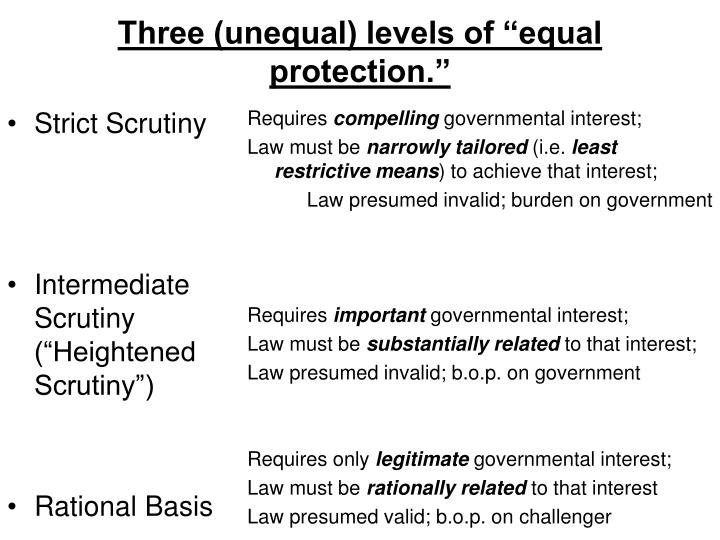

Important government objectives (intermediate) v. Intermediate scrutiny is distinguished from strict scrutiny at both the objective and means levels. Boren establishes intermediate scrutiny as the appropriate level of review for gender-based classification. Furthermore, he believes that the intermediate scrutiny applied by the Supreme Court of the United States (Supreme Court) is so “diaphanous and elastic” as to encourage judicial prejudice.ĭiscussion. He believes that rational basis analysis is the appropriate level of scrutiny for gender-based classification. As such, it is not constitutional.ĭissent. Brennan is not persuaded by the Appellees’, Craig and others (Appellees), statistics that the statute closely serves the stated objective. The District Court unequivocally found that the objective to be served by the statute is increased traffic safety. Specifically, the gender-based classification must serve an important government objective and be substantially related to the achievement of such objective. Brennan) argues that case precedent dictates that an intermediate level of scrutiny should be applied in analyzing the statute. Appeals Court ruling reversed and remanded. Does the Oklahoma statute violate the Equal Protection clause of the Fourteenth Amendment of the Constitution? Suit was brought against the State, alleging the law violated the Equal Protection clause of the Fourteenth Amendment of the Constitution.

The government still has to prove that it has an important state interest, and that the discrimination is 'substantially related' to an 'important government interest. The State of Oklahoma prohibited the sale of “nonintoxicating” 3.2% alcohol beer to men under the age of 21 and women under the age of 18. Intermediate scrutiny applies when the government discriminates on the basis of gender or parental marital status. A law that receives strict scrutiny is presumed to be unconstitutional unless it can meet certain strict conditions a law that receives intermediate scrutiny is assumed to have serious questions about its constitutionality and must meet a slightly more flexible set of restrictions and a law analyzed under rational-basis. American Association of University Womenįacts. District Attorney’s Office for the Third Judicial District v.Christian Legal Society Chapter of the University of California, Hastings College of the Law v.
#Strict scrutiny vs intermediate scrutiny free#
Arizona Free Enterprise Club’s Freedom PAC v.The Board of Wardens of the Port of Philadelphia ex rel. Regents of the University of California v.Board of Education of Oklahoma City Public Schools v.Charlotte-Mecklenburg Board of Education 402 U.S. Personnel Administrator of Massachusetts v.United States Department of Agriculture v.United States Railroad Retirement Board v.


 0 kommentar(er)
0 kommentar(er)
